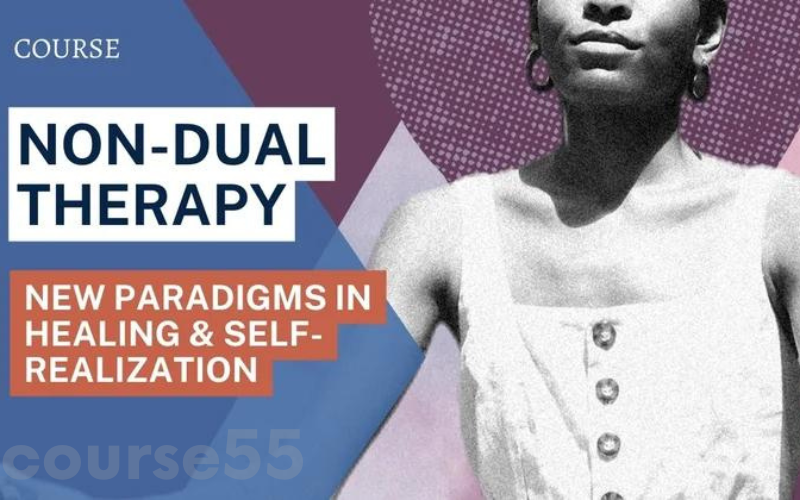Non-Dual Therapy: New Paradigms in Healing & Self-Realization – Collection By Georgi Johnson
$149.00 Original price was: $149.00.$23.00Current price is: $23.00.
Non-dual therapy: New paradigms in healing & self-realization – Collection by Georgi Y. Johnson
Content Proof:
The concept of non-duality has recently emerged as a transformative lens through which we can view mental and emotional well-being. In her collection, Non-dual therapy: New paradigms in healing & self-realization, Georgi Y. Johnson weaves together spirituality and psychology to provide a comprehensive map toward healing and self-realization. This work is not simply a theoretical exploration; it is an invitation to embark on a journey of profound understanding and connection with one’s true self. By recognizing the interconnectedness of all things, Johnson proposes that we can dismantle the barriers created by trauma and societal conditioning, ultimately paving the way for lasting well-being.
Throughout the book, Johnson emphasizes the practical applications of non-dual therapy, addressing pressing issues such as trauma, grief, and relationship dynamics. She contends that by cultivating a sense of unity and compassion, individuals can dissolve their internal conflicts and facilitate emotional healing. This collection is essential for both practitioners in the field of psychology and those seeking greater self-understanding. With her background in spiritual psychology, Johnson’s framework incorporates traditional practices while offering contemporary insights, making this work both classic and innovative.
Understanding Non-dual Therapy: A New Approach to Healing
Non-dual therapy represents a radical shift from traditional therapeutic approaches. Rather than focusing solely on symptoms or behaviors, it encourages a perspective that considers the inherent connectedness of all beings. This shift is likened to changing the lens of a camera; by adjusting our viewpoint, we can capture a more expansive and holistic picture of our experiences. Just as the butterfly effect suggests that small actions can create significant outcomes, engaging with non-dual therapy can lead to profound transformations in one’s life.
Core Principles of Non-dual Therapy
Johnson outlines several fundamental principles of non-dual therapy that serve as a foundation for healing:
- Unity: Recognizing that, at a fundamental level, we are all interconnected. This perspective fosters empathy and compassion, essential ingredients for healing.
- Awareness: Encouraging individuals to cultivate awareness of their thoughts and feelings without judgment. This practice helps dissolve attachments to negative responses and habitual patterns.
- Letting Go: Facilitating the release of limiting beliefs that arise from trauma and societal conditioning. This principle enables individuals to free themselves from predefined narratives and engage in a more authentic way of being.
By focusing on these core principles, Johnson provides a roadmap to navigate the complexities of the human experience. Non-dual therapy becomes not merely a technique, but a way to embody a deeper understanding of life itself.
The Intersection of Spiritual Psychology and Therapeutic Practices
The richness of Johnson’s work lies in her capacity to blend spiritual psychology with therapeutic practices. While traditional psychology often emphasizes cognitive and behavioral interventions, spiritual psychology addresses the deeper existential questions of identity and purpose.
Key Elements of Spiritual Psychology
- Holistic Perspective: Acknowledging the whole person mind, body, and spirit as integral to the healing process.
- Integration of Spiritual Principles: Utilizing concepts such as mindfulness, presence, and acceptance to foster healing.
- Personal Journey: Recognizing that each individual’s path to self-realization is unique and should be supported rather than prescribed.
This holistic approach informs the non-dual therapeutic process, allowing clients to explore their inner worlds and reclaim their narratives. By fostering conditions under which individuals can discover their intrinsic worth, non-dual therapy encourages profound personal transformations.
Overcoming Trauma and Grief through Non-dual Therapy
One of the most compelling aspects of Johnson’s work is her attention to trauma and grief. These experiences can create emotional barriers that inhibit self-realization. Non-dual therapy offers tools to navigate these challenges effectively.
Addressing Trauma
- Reframing the Narrative: Through the principles of non-duality, clients learn to see their trauma not as a definitive label but as a part of their broader life experience.
- Cultivating Compassion: By fostering compassion towards oneself, individuals can begin to heal their wounds and move towards integration.
- Empowerment Through Awareness: Understanding the mechanisms of trauma empowers individuals to reclaim their agency.
Navigating Grief
- Acknowledgment and Acceptance: Validating feelings of grief as a natural part of the human experience allows for healing to begin.
- Community Connection: Recognizing the interconnected nature of existence helps individuals feel less isolated in their sorrow.
- Transformative Rituals: Engaging in personal or communal rituals can facilitate the grieving process and honor the lost.
These aspects highlight that non-dual therapy is not merely a method of alleviating symptoms but a comprehensive paradigm for understanding and integrating life’s most challenging experiences.
The Transformative Power of Non-dual Therapy
Engaging with non-dual therapy leads to significant shifts in perception, ultimately facilitating transformative life changes. Johnson illustrates that transformation often begins with a simple change in awareness acknowledging oneself as part of a larger whole can shift perspectives and enable meaningful connections.
Case Studies and Personal Narratives
Throughout her work, Johnson incorporates impactful case studies and personal narratives to illustrate the efficacy of non-dual therapy. These stories serve as poignant reminders of the potential for healing:
- A Veteran’s Journey: A former soldier struggling with PTSD finds solace in non-dual therapy, eventually reconnecting with feelings of unity that had been lost during combat.
- A Mother’s Grief: A woman grieving her child learns to reframe her loss through the lens of interconnectedness, finding a sense of community and support among others who have shared similar experiences.
These narratives not only validate the therapeutic process but also inspire hope, demonstrating that healing is possible.
The Role of Practitioners in Non-dual Therapy
For those trained in traditional therapeutic practices, incorporating the principles of non-duality can substantially enhance their work. Johnson offers insights into how practitioners can adapt their approaches to create a non-dual therapeutic environment.
Essential Training for Practitioners
- Developing Self-Awareness: Practitioners need to engage in their processes of self-discovery to effectively guide others.
- Training in Mindfulness Practices: Integrating mindfulness into practice fosters an atmosphere of presence and awareness.
- Support Networks: Building communities of practitioners who share knowledge and experiences promotes professional growth and synergy.
These elements underscore the importance of ongoing education and self-care within the field, ensuring that practitioners are equipped to facilitate healing in their clients.
Conclusion: Embracing a New Paradigm of Healing
Georgi Y. Johnson’s Non-dual therapy: New paradigms in healing & self-realization stands as a testament to the evolving landscape of mental and emotional well-being. By embracing non-duality, individuals can navigate their inner landscapes with a sense of unity and compassion, ultimately leading to profound transformations. This collection serves as both a guide and a source of inspiration, inviting readers to embark on a journey toward self-realization and liberation from limiting beliefs. In a world often marked by division, the principles of non-dual therapy illuminate a path toward healing, connection, and personal freedom an invaluable gift for anyone ready to explore the depths of their true potential.
Frequently Asked Questions:
Business Model Innovation: We use a group buying strategy that enables participants to share costs and access popular courses at lower prices. This approach helps individuals with limited financial resources, although it may raise concerns among content creators regarding distribution methods.
Legal Considerations: Our operations navigate complex legal issues. While we do not have explicit permission from course creators to resell their content, there are no specific resale restrictions mentioned at the time of purchase. This lack of clarity allows us to offer affordable educational resources.
Quality Control: We guarantee that all course materials provided are identical to those offered directly by the creators. However, please note that we are not official providers. As a result, our services do not include:
– Live coaching calls or sessions with the course author
– Access to exclusive author-controlled groups or portals
– Membership in private forums
– Direct email support from the author or their team
Our goal is to make education more accessible by offering these courses independently, without the additional premium services available through official channels. We appreciate your understanding of our unique approach.
Be the first to review “Non-Dual Therapy: New Paradigms in Healing & Self-Realization – Collection By Georgi Johnson” Cancel reply
You must be logged in to post a review.
Related products
Hypnosis & NLP
Personal Development
Personal Development
Personal Development
Personal Development
The Hero Physique – Build An Aesthetic Body Naturally – Chris Archer
Personal Development
LEAP EXPERT Package: All LEAP Lessons + The FULL White Dove Masterclass Series – Nate Zeleznick
Personal Development
Personal Development
Unreal Series: Multiverse Key – Talmadge Harper – Harper Healing
Personal Development
Premium Lucid Breakthrough Program – Stefan Zugor – HowToLucid
Personal Development
Personal Development
Personal Development
Personal Development
Personal Development



















Reviews
There are no reviews yet.